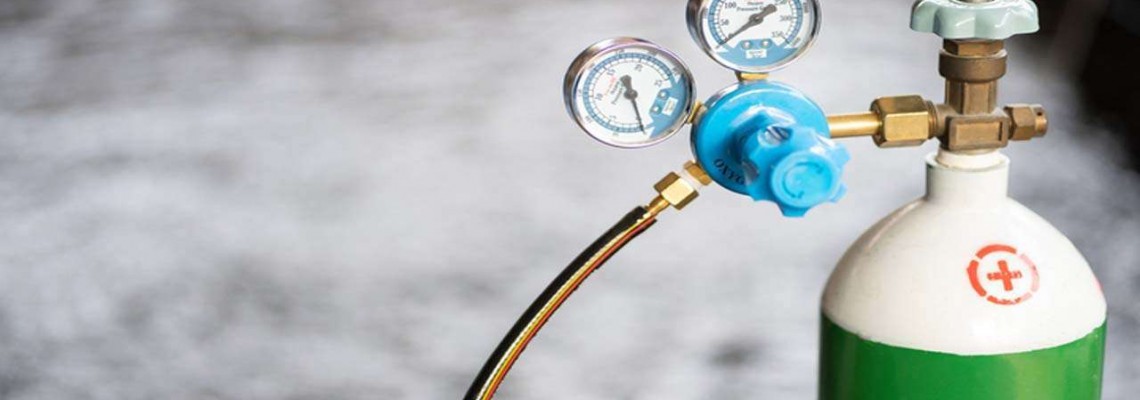
Copy from : https://timesofindia.indiatimes.com/most-searched-products/health-and-fitness/buying-guide/oxygen-concentrator-buying-guide-important-factors-to-consider-before-buying-one/articleshow/82214207.cms
Having a low blood oxygen level can be very risky and anybody suffering
from it might feel difficulty in breathing, exhaustion, and confusion,
which can directly affect your decision-making abilities. If the Oxygen
level in the blood drops way too much it can hurt the functions of vital
organs like the brain and heart.
It is in such a situation that Oxygen Concentrator comes as a
huge help. It can be really helpful for someone suffering from low
blood oxygen levels.
How Does An Oxygen Concentrator Work
The portable oxygen concentrators are a great choice for extended
travel and short-term trips, home oxygen concentrators are built for
long-term use at home. The oxygen concentrators work by separating
oxygen molecules in the air from the nitrogen molecules to form a
concentrated gas made up of 90–95% pure oxygen. Normally, the air we
breathe is made up of 79% nitrogen and 21% oxygen. Home oxygen
concentrators flip that ratio on its head to create a gas that is almost
pure oxygen for therapeutic purposes.
Also read: Top pulse oximeters that you can buy online.
How To Choose The RIGHT Oxygen Concentrator
Before buying an Oxygen Concentrator, there are certain things that you need to keep in mind such as:
- Flow Rate
Indeed one of the most important factors to consider when buying an
oxygen concentrator is to check its flow rate capabilities. Flow Rate
indicates the rate at which oxygen is able to travel from the machine to
the patient.
An ideal process is that a doctor should advise the ideal flow rate
for a patient, thus it is recommended that you discuss any potential
oxygen concentrator purchases with your doctor first.
Some oxygen concentrators may have lower flow rates (in the range of
250 to 750 milliliters per minute) and there are others that may offer
higher flow rates (such as the 2 to 10 liters per minute range). Since
not all oxygen concentrators provide the same range of flow rates, it is
very important that customers keep a check on the flow rate offered by
the product.
- Power Consumption
Oxygen Concentrators generally draw power from any regular wall
outlet just like any other home appliance. But, the amount of energy
this device uses differs widely. While it is advisable to purchase the
concentrator that boasts the lowest power consumption, your oxygen
requirements, as prescribed by your doctor, might lead you to a device
that consumes a bit more power. Besides, there are some models that come
with an option of working on consumer-grade batteries as well, which is
helpful if the power goes out.
- Portability
Another important aspect for you to look out for is how mobile you
will need your concentrator to be. Oxygen concentrators can range
significantly in size and portability.
There are some units that are high-powered and designed to work hard
and provide higher flow rates, but are typically larger and heavier.
These models are often designed to deliver higher flow rates, and are a
great solution for in-home use.
Then there are others that are much more portable, typically
weighing between 2 to 4 kgs. These portable oxygen concentrators
sacrifice higher flow rates in order to be significantly easier to
transport and use while out and about. This makes them the perfect tool
for patients who do not require high oxygen flow rates.
- Oxygen Concentration
After being compressed and filtered within the concentrator, the
oxygen that is delivered to the patient has a particular percentage of
pure oxygen content. This value is referred to as the oxygen
concentration. This level of oxygen concentration is affected by the
design of the filtration system included in the particular oxygen
concentrator, as well as the effectiveness of the concentrator’s
nitrogen-removing sieve system.
Though the major chunk of oxygen concentrators have a concentration
value between 87 to 99 percent, this value can vary between oxygen
concentrators. Typically, higher-powered products that are designed for
patients who require high oxygen flow rates are also capable of
providing higher oxygen concentrations, whereas lightweight, portable
oxygen concentrators for patients on the go do not usually require the
highest oxygen concentrations.
Also read: Popular nebulizers that are apt for kids and adults
- Noise Level
Home oxygen concentrators work by drawing in air from the
environment and filtering out the oxygen—which can produce some noise at
times. If you are sensitive to noises, you might want to consider a
concentrator that operates silently. The concentrators on this list
range anywhere from 40–58 decibels of sound. For context, 40 dB is
equivalent to bird calls or the ambiance of a standard library. On the
other hand, 60 dB is equivalent to a close conversation or a running air
conditioner.
- Warranty
Just like any appliance, the oxygen concentrator will have a
warranty. However, each manufacturer has a different warranty policy.
Since these devices are built to last a long time, it is a good idea to
review the warranty policy beforehand to make sure you get every bit of
functionality you are paying for.
Conclusion
Oxygen concentrators can be life
saving appliances and are invaluable for its convenience and effective
delivery of oxygen to those patients who cannot get enough on their own.
These devices utilize the ambient air in any room to filter, process,
and compress, then ultimately deliver purely oxygenated air to those who
need it.
However, before buying one or using
one yourself you are advised to consult a doctor. A professional doctor
will be the right person to guide you through its needs and usage.
DISCLAIMER: The Times of India's journalists were not involved in the production of this article.
- What is the price of oxygen concentrator?
Typically, an oxygen concentrator comes somewhere between Rs 30,000 to Rs 70,000. - How do I choose an oxygen concentrator?
While selecting an oxygen concentrator, some of the parameters that should be kept in consideration are flow rate, portability, noise, oxygen concentration, etc. - Is medical prescription needed to buy an oxygen concentrators?
Since an oxygen concentrator is a medical-grade oxygen treatment device, a medical prescription becomes mandatory to buy one. - How many hours is an oxygen concentrator good for?
Generally, the life span of a portable oxygen cylinder is somewhere between 1,500 hours to 2,000 hours.




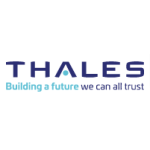




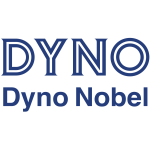
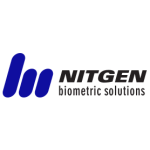

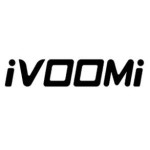

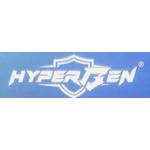

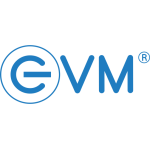


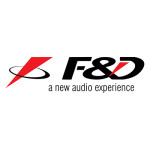
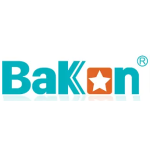

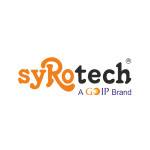
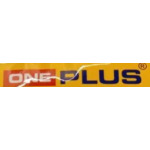
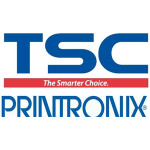




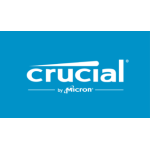
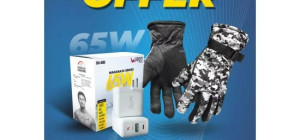

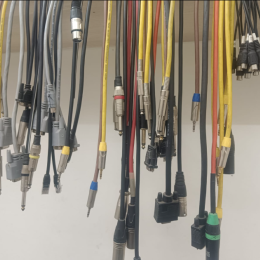
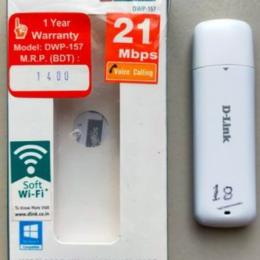
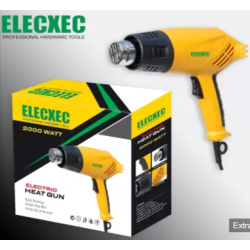
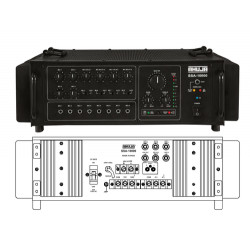
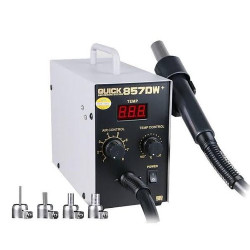
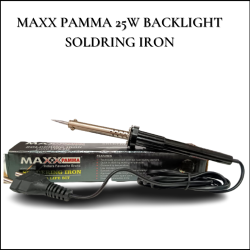
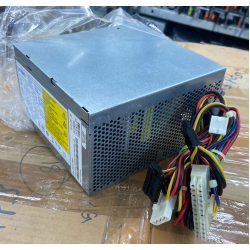
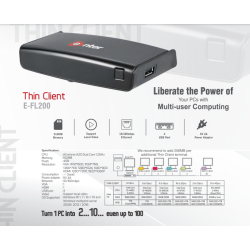
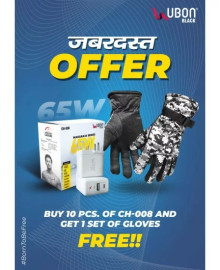



156 Comment(s)
It is located near to the Outer Ring Road, which is an arc that surrounds important areas of South Delhi. In addition, private taxi services may be hired, and there is paid parking available for automobiles and motorbikes.
This article is a great source of information that is both important and easily accessible. Don't waste time. Start at the top by going to the homepage.
Many games involve managing time effectively to achieve objectives, helping players develop better time management skills in their daily routines.
please give me 1 view https://smartplay.vn/6-mau-do-choi-lap-rap-xe-mo-to/
Sports nurture creativity and writing skills through active engagement. Physical activity fuels cognitive agility, enhancing the ability to express thoughts effectively in writing
Thanks for your hardwork
This implies that while RAM can increase performance, the SSD has a bigger influence on startup time and overall responsiveness.
This suggests that while RAM can boost performance, SSDs have a greater impact on startup times and overall responsiveness.
This suggests that while RAM can improve performance, the SSD has a more significant impact on boot time and responsiveness in general.
I've reviewed Paperial.com, and I must say their services are impressive. Their team of writers ensures high-quality essays, timely delivery, and affordable prices. It's a solid choice for students seeking essay help.
With respect to choice and assurance our office is doing diligent work to bear the cost of you such help that you can call us whenever and offer us the benefit to serve you to an ever increasing extent. Here are such things that can change your psyche to get in touch with us instantly; we are working here to energize you with our sensual escorts so as to give you a chance to feel loose and this objective has turned into our central decision so you will be here to be quiet. Select your area and prepare with everything that you can amass, concerning your assurance we are here, proceed to celebrate with your accomplice that you did pick and do everything that you was anxious to do or give her a chance to do that she was sharp doing since gathering you.
You've made so many great points here that I've read your article a few times. Most of your views align with mine.
Our organization offers both on-call and out-call escort services in Delhi. You can either spend a night with high-profile call girls at our place or accompany them to your destination.
It is advised that you speak with your doctor before making any prospective purchases of oxygen concentrators, as the optimum procedure would be for them to prescribe the best flow rate for a patient.
I sought information about tesofensine side effects on this service. The service turned out to be really reliable and informative. I got all the necessary knowledge to competently manage risks. I recommend it!
It's best to consult your physician before considering any potential oxygen concentrator purchases, as it would be ideal for them to determine the ideal flow rate for a patient.
Our Busty Zirakpur Escorts Services is the centre point of most extravagant and prominent men where you can get to to get great affection rapidly. Here you can likewise meet with Russian escorts who are the most requested delights here in Zirakpur.
Making money from slot machines, also known as slots, has long been a popular way to make money among gambling enthusiasts. However, with the advent of online casinos and the ability to play slots online, it has become even more accessible and convenient. Find out more at <a href="https://dwidude.com/what-are-the-best-online-casinos-in-greece-2023/">https://dwidude.com/what-are-the-best-online-casinos-in-greece-2023/</a>
学生在学业中可能面临各种各样的作业任务,包括论文、报告、研究项目等。有时候,他们可能因为时间不足、主题难度或其他个人原因而难以完成这些作业。Assignment代写服务的存在填补了这种学业辅助的需求,为学生提供了一个可靠的选择。
I recently tackled a persistent issue with standing water in a basement drain system, and I'm thrilled to share my successful fix! Initially, I noticed water pooling, causing concerns about potential damage and mold growth. After some research and expert advice, I opted for a comprehensive cleaning and snaking of the drains. Additionally, I installed a sump pump to ensure any excess water gets promptly removed. Voila! No more pooling or worries about dampness.
The bio-oxidative oxygen ozone therapy safety and minimal side effects were key factors that drew me in. It's reassuring to opt for a treatment that's gentle on the body yet packs a punch in terms of benefits. It's fascinating how such a non-invasive therapy can yield such profound results.
If anyone's curious about my personal experience or wants more information, feel free to ask! I'm here to share and support each other on our wellness journeys.
Je suis ravi de partager mon expérience positive avec la réparation de thermopompe sur à Montréal. Récemment, j'ai eu besoin d'une réparation urgente pour ma thermopompe et j'ai été enchanté par le service exceptionnel que j'ai reçu. L'équipe technique était incroyablement professionnelle, rapide et compétente. Non seulement ils ont résolu le problème rapidement, mais ils m'ont également donné des conseils précieux pour l'entretien futur. De plus, le coût était raisonnable pour le service de qualité que j'ai reçu. Si vous avez des soucis avec votre thermopompe à Montréal, je vous recommande vivement cette entreprise pour leur expertise et leur excellent service client.
Low blood oxygen levels can cause disorientation, tiredness, difficulty breathing, and poor decision-making. For those with this illness, oxygen concentrators might be helpful.
Independent Vasant Kunj are an ideal solution for those who wish to enjoy privacy in Vasant Kunj . These services are a boon for married couples, newlyweds, or people who are separated for the last few years.
Delhi Escorts can be hired for any special occasion. You can request them to bring a pampered woman along. You can also book a private escort for a romantic dinner date. These women have beautiful figures and are renowned for providing complete physical and mental satisfaction to their clients.
网课作业代做的成功率都很高,这一点不用质疑。那么对于考生而言,已经是板上钉钉的事情了自己还需要努力学习吗。答案是肯定的,考试助考与努力学习并没有矛盾。找考试枪手代上的目的是为了通过考试取得一个高的分数,而学习的目的是积累知识对自己的工作和未来生活打基础.
I really hope there will be a lot more content like this. I am grateful that you shared your information with me. Your blog has been bookmarked because I discovered some extremely useful information on it.
Just wanted to share my recent discovery in the world of luxury eyewear https://optyx.com/ that has truly transformed my style game. I stumbled upon this incredible brand that not only offers top-notch craftsmanship but also adds a touch of elegance to every look. The attention to detail is unmatched, making each pair a statement piece. I can't help but feel a boost in confidence whenever I put them on. If you're on the lookout for a blend of sophistication and quality, do yourself a favor and check out this brand.
Just wanted to share my recent discovery in the world of luxury eyewear that has truly transformed my style game. I stumbled upon this incredible brand that not only offers top-notch craftsmanship but also adds a touch of elegance to every look. The attention to detail is unmatched, making each pair a statement piece. I can't help but feel a boost in confidence whenever I put them on. If you're on the lookout for a blend of sophistication and quality, do yourself a favor and check out this brand.
Your escort request is of the utmost importance to Delhi Escorts Services, which has proven competence at the necessary level. As Delhi Escort Service, we are an authorized escort service. Make your trip more sensual by connecting with us, who will provide you with truly memorable experiences that you will undoubtedly appreciate. We care about your safety and guarantee to offer you pleasant, first-rate, prompt, and effective escort services.
Independent Pune call girls mobile numbers and photos to help you find the most erotic women in the town in real-time. Booking a date with an independent call girl in Pune is a very simple task as you see the picture and select her and call her as per your schedule. They will always give you the precious and luxurious service to make your intimate moment.
了解网课代修机构的资质非常重要。一个优秀的网课代修机构应拥有一支专业且经验丰富的团队。
A watch party extension is a software add-on or feature that enables users to watch and chat about online videos or streaming content simultaneously with friends, often integrated into platforms like Netflix or Amazon Prime. Turn any night into a cinematic experience with our Watch Party Extension. Share the joy of movies, together, wherever you are.
hbo max watch party is a browser extension that lets you watch HBO with friends & family even if you're far apart. It syncs video playback, group chat, and even video and audio call features. It's your go-to for long-distance movie with loved ones.
You can enjoy romantic dates, dinners, movie dates, and parties with these hot call girls that you can book from our classified website. They can add a different level of excitement to your nightlife, and you can be sexually satisfied in every aspect you can imagine. With this classified website, you don't need to make any advance payments to confirm your booking; you can always have your session, enjoy it and then pay the money.
Every one of the hotties performing for High Class Call Girls Guwahati is just brilliant, and clients have never turned them down. The girls here may be of great assistance to anyone who is new to them.
Oxygen concentrators are available in different flow rates, typically measured in liters per minute (LPM).
If you are looking for a unique and enchanting dining experience in Bangalore then you must visit Oia Bangalore restaurant. Here you will explore its innovative cuisine or their cocktails. It promises you to have unforgettable memories and make you feel like you are in Greece. oia bangalore owner | oia pub bangalore.
<a
If you are wondering about can I bring zyn on a plane? then don't worry you can bring zyn in your both carry on and checked in luggage. But there are some rules and regulations about carrying nicotine products on a plane so it is advisable to read TSA's rules before travelling.
Aerocity has become a hub of escorts services now days. It’s because gentlemen stay here in Aerocity hotels and they ask for escort services after completing their business work. Aerocity is a high-class area and only high profile and VIP guys stay here. So, these gentlemen require high profile and classy escorts only. They do not require low quality or cheap call girls. In Delhi there are many escort agencies who provide only low-quality call girls. They cheat their clients on behalf of providing luxury escort services. But they do not.
Hello there, I am Dimpal Yadav Escort Service In Dehradun with perfect height and weight of 48 kg. I have an amazing personality and beautiful skin. I am available in Dehradun Escort Services.
My name is Deepika Verma; I am a 23 year old independent Panjim Goa Escort. I am offering my services very discreetly as a lover, so come and you are sure to leave our meetings absolutely relaxed.
Noida escorts service
Greater noida escort service
Jaipur escort service
Jaipur escort service
escort service in Chandigarh
Zirakpur escort service
Jaipur escort service
I'm Komal Kaur, an escort that loves to party hard and never says no to a good time with guys who can make me feel like a rock star again.
https://escortsjaipur.com/indian-pornstars.html
1
1
1
1
1
1
1
1
When it comes to companionship and entertainment, independent Chennai call girls are a popular choice among individuals seeking a memorable experience.
At vasnastories, we believe in offering our readers unexpected insights rather than relying on tired clichés.
Our stories are crafted with a keen understanding of human desires
1
1
1
1
1
https://www.girlaerocity.co.in/call-girl-dwarka.html
https://www.girlaerocity.co.in/call-girl-gurgaon.html
Rome is a city where history comes alive at every corner.
If you want romance in Paschim Vihar then you can come to us for that. Here you will see beautiful girls who can make you achieve orgasm with their services. If you want to call the girls of our agency to you then you can visit the website of Paschim Vihar Escorts for that.
许多学生对Essay代写 https://www.lunwentop.net/essay-daixie/ 的合法性和学术诚信问题存在困惑。大多数教育机构明确规定,所有学术作业必须由学生独立完成,任何形式的代写行为都被视为严重的学术不端。学生可能认为通过代写服务可以暂时摆脱学业压力,但实际上,这种行为一旦被发现,将面临严厉的惩罚,包括课程成绩作废、学术警告,甚至被开除。因此,学生在选择代写服务前,应当充分了解学校的规定和可能的后果。学术诚信是学术生活的基石,任何违背这一原则的行为都可能对个人学术生涯和未来发展产生深远的负面影响。找我们就能解决解决这些问题哦!
If you roam around in any area of Delhi, you can see the same thing everywhere. You will find young boys talking about beautiful Russian girls. You can hear this in every area of Delhi. In our agency also you will find Russian girls who can give you a lot of pleasure. If you want to call them or if you are interested in having sex with them in bed, then you can visit the website of Delhi Russian Escorts. They are always available for you at the time of calling them.
Have fun with beautiful girls in your office at night and make your day memorable because we should experience everything, Aerocity Escorts girls will give you full enjoyment, they can also have fun on your table in the office
Only Russian girls have the ability to call anyone to their side in Delhi. Every boy in Delhi wants to spend his time with every hot Russian girl, so you will get this only by coming to our agency. If you want to call these girls, then you can visit the website of Delhi Russian Escorts and make a memorable moment with them.
Service apartments in Saket, commonly called extended stay apartments, are fully furnished accommodations that can be rented temporarily or permanently. They have every essential facility, such as kitchen, living room and bedroom, to make visitors feel at home
传统的课堂学习需要学生坐在教室中,按时上课并完成大量作业任务。而通过网课代修,学生可以自由安排学习时间,不受固定课程表的束缚。无论是兼职工作、实习还是参加社团活动,学生都能更好地平衡学业和其他活动。这种自由度不仅提高了学生的学习效率,还为他们提供了更多发展个人兴趣和能力的机会。
Pune call girls are trained to give more deep enjoyment to people who contact us for escort services. We made it very simple to find escort services in Pune.
The sexuality of our females is recognized by our company proposals. Top-of-the-line, fully-featured RK Puram girl call number is available, so we suggest to be on the lookout for This is the primary reason for our customers to sign up and our customers will recognize the importance to their lives very quickly. Positively captivating web series entertainers at the price of 10000.
Voodoo regularly updates the game with new maps, skins, and features, keeping the gameplay fresh and exciting. These updates ensure that players always have something new to look forward to.
Wow, great article. I want to write like this too.
We are J4 Jacket, and we deal in a captivating range of jackets, from the closets of your favorite celebrities to their movie and TV series wardrobes.
需要Assignment代写?我们提供专业、可靠的服务,确保高质量、高分数。无论是论文、报告还是作业,我们都有经验丰富的专家为您量身定制。保密性强,交付及时,让您无后顾之忧。立即联系我们,享受首次下单优惠,轻松提升学术成绩!
Amritsar Escorts is one of renowned Verified Escorts Service in Amritsar, India, Provides high profile Girls in Amritsar.
We have collection on Bollywood models and high profile Amritsar Call girls whom are ready to entertain you on your bed.
https://www.amritsarescort.co.in/
https://www.hi5girl.in/
https://www.anshuverma.in/
https://www.amritsarcallgirls.co.in/
https://www.sexyindianpari.com/
We have not too long ago started out any website, the knowledge an individual offer on this web site provides aided myself tremendously. Thank you regarding your entire moment & perform. pool covers https://designerpoolcoverskzn.co.za/
Thank you for sharing this article with me and everyone. The article is very good and really useful for people who do not know anything about typical machines like me. Thanks to this article, I have gained more good and useful knowledge in life
Professional LED TV repair in Delhi by Aman Repairing. Get your TV fixed with expert care. Quick, reliable repairs for all LED TV models and other services like Ac Repairing Service, Refrigerator Repair Service, Installation Service, Microwave Repair Service Contact me now!
a extremely superb webpage. a realy educational in addition to a an extremely superior position. i’m a sucker for the. bulk bags https://vaal-bulk-bags.co.za/
Please continue this great work and I look forward to more of your awesome blog posts.
OKDHSLive has dedicated its services to the security of the people working there and the common public. Also, it has consistently given its services to the people out there.
我们在保障Essay质量的基础上,也在价格上做出了最大的让步。我们一直将性价比作为发展的重要原则。我们的Essay代写价格是根据字数、截止日期和您的学历水平计算的。 如果您在任何其他需要研究、计算、编程等的Essay方面需要帮助,或者需要网课或考试方面的帮助,请先下订单,以便我们的专家能够检查您的订单详细信息并进行报价。 您可以先检查价格,然后才做出决定。
These lucky people have great communication skills and a great personality. You can get along with them in a very short time and they will become your true friend. You can have an intimate, exciting session with them. However, you can also share your thoughts and feelings. Real food for your mind, body, and soul. It's possible to have fun and forget about your stress for a while.
When buying an oxygen concentrator, it’s essential to consider various factors to ensure you choose a model that best fits your needs. By carefully considering these factors, you can select an oxygen concentrator that best suits your lifestyle and medical needs. thanks for sharing this.
<a href="https://www.joispa.com/body-massage-in-hsr-layout.html">b2b massage hsr layout</a>
Surprise! The things a watch opener this approach content is actually in my position. A whole lot highly valued, book marked, Document can’t anticipate a great deal more!
对于那些多门课程交叉进行的学生来说,网课代修是一个有效的解决方案。修读多门课程的压力很容易让人感到疲惫不堪,尤其是在应对难度较大的课程时,这种压力更加明显。
Really enjoyed reading your blog. It is highly informative and builds great interest for the readers. For the people like us your blogs helps to get ideal information and knowledge. Thanks for providing such blogs
This article was incredibly informative and well-researched. Thank you for sharing such valuable content!.
I do agree with all the ideas you’ve presented in your post. They’re really convincing and will certainly work. Still, the posts are too short for novices. Could you please extend them a little from next time? Thanks for the post
Thank you for sharing. I look forward to reading more informative blogs from you in the future.
The article strikes a friendly and informative tone, making it accessible to a broad audience. It balances historical information with practical advice, appealing to both newcomers to the tradition and seasoned tea enthusiasts alike.
Thank you for sharing. I look forward to reading more informative blogs from you in the future.
The content was really very interesting. I am really thankful to you for providing this unique information You have a good point here! I totally agree with what you have said!! Thanks for sharing your views
Took me time to read all the comments, but I really enjoyed the article. It proved to be Very helpful to me and I am sure to all the commenters here! It’s always nice when you can not only be informed, but also entertained!
content was really very interesting.
We notion it really is a good idea to publish could anyone was initially having issues searching for however , My organization is a bit of dubious just have always been allowed to insert leaders together with contact regarding at this point.
I am continually amazed by the amount of information available on this subject. What you presented was well researched and well worded in order to get your stand on this across to all your readers. kinggame https://kinggame.bet/
Excellent article. Very interesting to read. I really love to read such a nice article. Thanks! keep rocking.
Hello I am so delighted I located your blog, I really located you by mistake, while I was watching on google for something else, Anyways I am here now and could just like to say thank for a tremendous post and a all round entertaining website. Please do keep up the great work.
This is very educational content and written well for a change. It's nice to see that some people still understand how to write a quality post!
Cookie Clicker 2 is an engaging incremental game where you bake endless cookies by clicking and upgrading to automate your progress.
Portable units are lightweight and designed for mobility, making them suitable for travel. Stationary units are larger, typically more powerful, and designed for home use.
Very interesting blog. Alot of blogs I see these days don't really provide anything that I'm interested in, but I'm most definately interested in this one. Just thought that I would post and let you know.
Very interesting blog. Alot of blogs I see these days don't really provide anything that I'm interested in, but I'm most definately interested in this one. Just thought that I would post and let you know.
I admire this article for the well-researched content and excellent wording. I got so involved in this material that I couldn’t stop reading. I am impressed with your work and skill. Thank you so much.
Thanks for picking out the time to discuss this, I feel great about it and love studying more on this topic. It is extremely helpful for me. Thanks for such a valuable help again. Best iptv subscription https://myprivateiptv.com
We have sell some products of different custom boxes.it is very useful and very low price please visits this site thanks and please share this post with your friends.
Thank you very much for this useful article. I like it.
What is an outstanding post! “I’ll be back” (to read more of your content). Thanks for the nudge!
Attractive, post. I just stumbled upon your weblog and wanted to say that I have liked browsing your blog posts. After all, I will surely subscribe to your feed, and I hope you will write again soon!
You know your projects stand out of the herd. There is something special about them. It seems to me all of them are really brilliant!
Fireboy and Watergirl first hit the web in 2016 and has since grown into a beloved franchise.
Choosing the right oxygen concentrator involves understanding your specific needs and considering various factors such as type, flow rate, portability, and maintenance.
Sustain the great do the job, When i understand several threads within this web page in addition to I'm sure that a world-wide-web blog site is usually authentic useful possesses bought bags connected with excellent facts.
thank you for your interesting infomation.
Stake is an online platform offering casino games and sports betting. Users must register to play games or place bets. It operates with cryptocurrencies like Bitcoin and Ethereum for transactions. The site provides bonuses through various promotions and challenges. Stake ensures fairness using provably fair algorithms in its games. Players can access the platform from most countries, but some regions restrict its use due to local laws. Customer support is available 24/7 through live chat and email for assistance. Stake frequently updates its game library with new titles from reputable providers. The platform also features a VIP program rewarding loyal players with exclusive benefits. Withdrawals at Stake are typically processed quickly, ensuring players access their winnings without unnecessary delays. stake https://medium.com/@cryptomastery/stake-canada-how-to-play-legal-and-alternative-63782856ea1d
Great write-up, I am a big believer in commenting on blogs to inform the blog writers know that they’ve added something worthwhile to the world wide web!..
Superior post, keep up with this exceptional work. It's nice to know that this topic is being also covered on this web site so cheers for taking the time to discuss this! Thanks again and again!
I know this is one of the most meaningful information for me. And I'm animated reading your article. But should remark on some general things, the website style is perfect; the articles are great. Thanks for the ton of tangible and attainable help.
Yes, users can find platforms offering such promotions without needing to make an initial deposit. These spins allow players to test games without risking their cryptocurrency. Platforms usually set wagering requirements for winnings from these spins. Verification processes may be necessary to claim the free spins. The variety of games accessible with no deposit spins often includes slots and table games. Expiry dates often apply to these bonuses, limiting their availability. Users may need to enter specific promo codes to activate the offer. Maximum withdrawal limits often cap the amount of winnings that can be cashed out from free spins. Regular updates to terms and conditions mean players should read them carefully. Joining online communities can provide insights into securing the best no deposit free spin deals.
You have performed a great job on this article. It’s very precise and highly qualitative. You have even managed to make it readable and easy to read. You have some real writing talent. Thank you so much.
The best 1xBet promo code: 1XBIG777, you will be able to get a 100% welcome bonus up to $130 on sports and up to $1,500 bonus and 150 free spins on the casino. The bonus will be activated only once you have made a first payment. This welcome bonus will be equivalent to 100% on your account, up to approximately $130 or an amount equivalent to their currency. 1xbet promo code today https://fsris.org.rs/news/1xbet_promo_code_free_bonus_code.html
You have performed a great job on this article. It’s very precise and highly qualitative. You have even managed to make it readable and easy to read. You have some real writing talent. Thank you so much.
It is an excellent blog, I have ever seen. I found all the material on this blog utmost unique and well written. And, I have decided to visit it again and again.
It is truly a well-researched content and excellent wording. I got so engaged in this material that I couldn’t wait reading. I am impressed with your work and skill. Thanks.
I am very happy to discover your post as it will become on top in my collection of favorite blogs to visit.
I have read your blog it is very helpful for me. I want to say thanks to you. I have bookmark your site for future updates.
Very useful post. This is my first time i visit here. I found so many interesting stuff in your blog especially its discussion. Really its great article. Keep it up.
The article looks magnificent, but it would be beneficial if you can share more about the suchlike subjects in the future. Keep posting.
I am jovial you take pride in what you write. It makes you stand way out from many other writers that can not push high-quality content like you.
I definitely enjoying every little bit of it. It is a great website and nice share. I want to thank you. Good job! You guys do a great blog, and have some great contents. Keep up the good work.
I always search to read the quality content and finally I found this in your post. Good luck for your next one.
I’ve been surfing the web for more than 3 hours today, yet I never found any stunning article like yours.
Your blog post is very interesting. Your level of thinking is good and the clarity of writing is excellent. I enjoyed so much to read this post
I am jovial you take pride in what you write. It makes you stand way out from many other writers that can not push high-quality content like you.
Thanks for picking out the time to discuss this, I feel great about it and love studying more on this topic. It is extremely helpful for me. Thanks for such a valuable help again.
Thanks for picking out the time to discuss this, I feel great about it and love studying more on this topic. It is extremely helpful for me. Thanks for such a valuable help again.
Your website is really cool and this is a great inspiring article.
Very informative post! There is a lot of information here that can help any business get started with a successful social networking campaign.
I really appreciate the kind of topics you post here. Thanks for sharing us a great information that is actually helpful. Good day!
it was a wonderful chance to visit this kind of site and I am happy to know. thank you so much for giving us a chance to have this opportunity..
Wonderful article. Fascinating to read. I love to read such an excellent article. Thanks! It has made my task more and extra easy. Keep rocking.
Nice blog and absolutely outstanding. You can do something much better but i still say this perfect.Keep trying for the best.
Admiring the time and effort you put into your blog and detailed information you offer!..
Very useful post. This is my first time i visit here. I found so many interesting stuff in your blog especially its discussion. Really its great article. Keep it up.
Thank you so much for the post you do. I like your post and all you share with us is up to date and quite informative, i would like to bookmark the page so i can come here again to read you, as you have done a wonderful job.
OLXToto is a popular online gaming platform offering a variety of betting options, including lottery, sports betting, and casino games. Known for its user-friendly design and secure transactions, it attracts players seeking thrilling entertainment and the chance to win. OLXToto is a top choice for online betting enthusiasts
I think this is an informative post and it is very useful and knowledgeable. therefore, I would like to thank you for the efforts you have made in writing this article.
Good artcile, but it would be better if in future you can share more about this subject. Keep posting.
Excellent article! I’m excited to read more of your work. Feel free to explore my content as well. Thank you!
https://sprunki-lairity.com/
Play sprunki lairity online. sprunki lairity is a very special mod in the incredibox sprunki game and is worth trying.
Allpaanel has rapidly emerged as a leading platform in the online gaming industry. With a diverse selection of games, a seamless user experience, robust security measures, and excellent overall value, it stands out as a top choice for gamers.
Gold365 is an online platform that has garnered attention for its diverse gaming options and user-friendly interface. The platform offers a wide array of casino games, including traditional favorites like roulette, poker, blackjack, andar bahar, and teen patti. Additionally, it provides live sports opportunities on events such as cricket, basketball, football, tennis, and greyhound racing.
Mahadev Book ID is an online betting platform that provides users with access to sports betting, online games, and other games activities. It offers a secure and user-friendly interface for placing bets on various sports and live games. Users can create an account, deposit funds, and start betting with ease.
Moto X3M is an exciting bike racing game with challenging levels. Ride through obstacles, perform stunts, and race against time to complete each track as fast as possible!
Sprunki 1996 is a delightful throwback to the 90s, combining nostalgia with creativity in a fun, browser-based music game. The drag-and-drop mechanics make it easy for anyone to create unique tracks using quirky characters and layered sounds. With its retro visuals and engaging gameplay, it’s perfect for both seasoned gamers and casual players. I love discovering hidden animations and secret beats!
With Nulls Brawl, you can test any brawler, any skin, and any ability without waiting. Play on a private server with unlimited gems and coins!
Leave a Comment